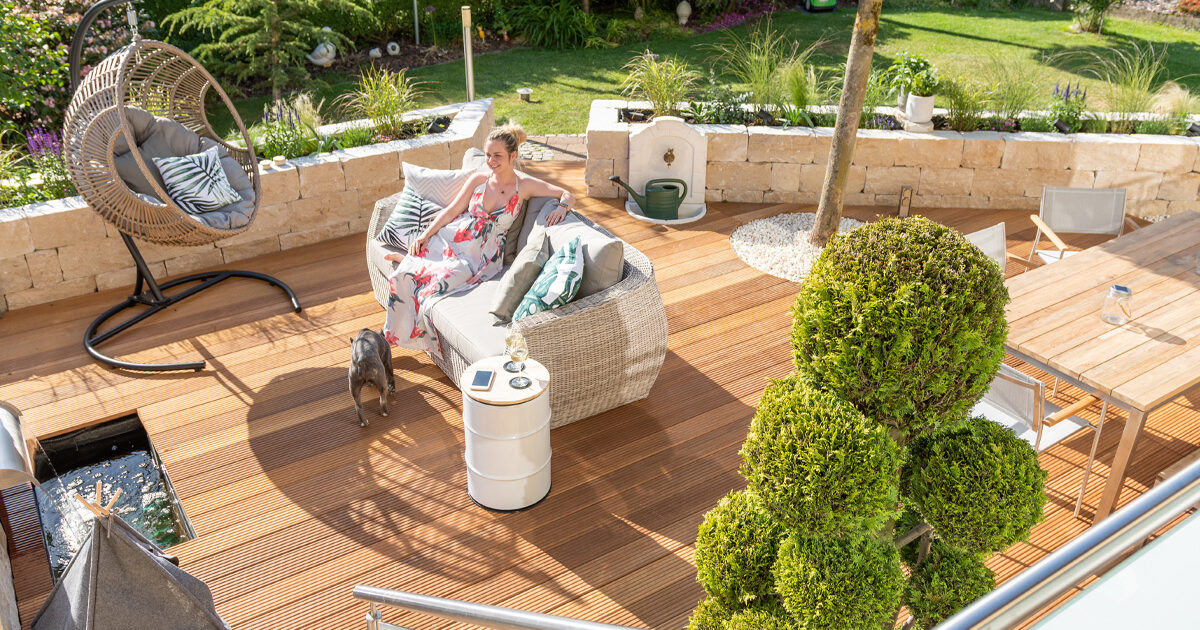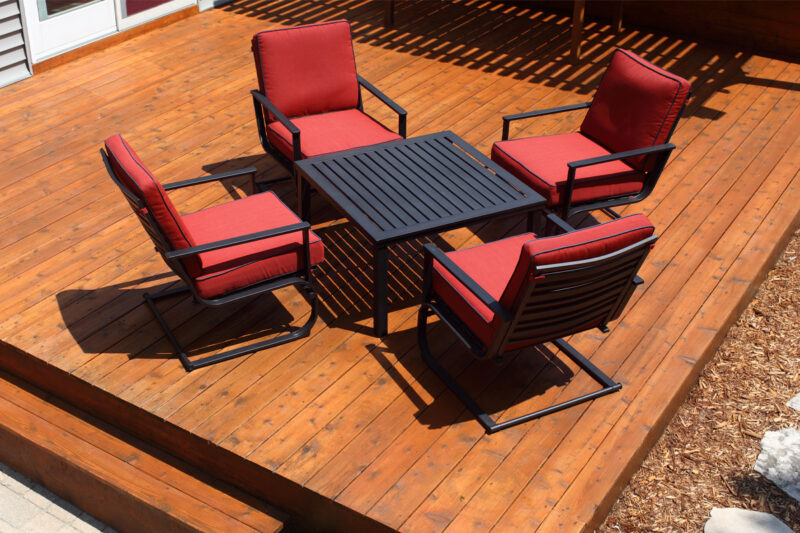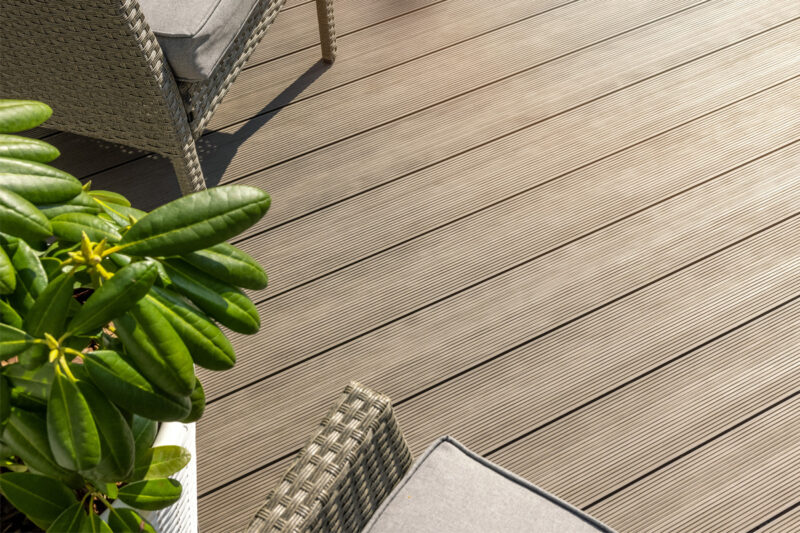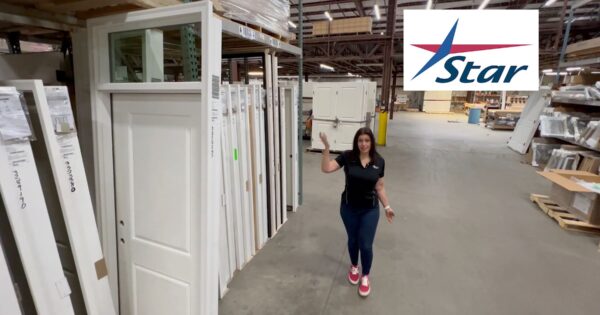
Wood vs Composite Decking: A Homeowner’s Guide to Choosing the Best Deck Materials
Wondering how to choose the best deck materials? Homeowners are often torn between wood and composite decking, and for good reason. Your safety, finances, style and comfort all depend on your choice of decking material. To make the decision easier, Star Lumber, a trusted Wichita building material supplier for decades, is providing this comprehensive guide to choosing the best deck materials.
Wood Decking

Wood decking has a vast selection of design options, each with unique protections and benefits. Pressure treated wood is injected with special preservatives to prevent weathering, insect damage, and rot. Most wooden decks are made of pressure treated pine, cedar, or redwood. On average, pine is the least expensive wood choice but is not as durable as other decking options. Both cedar and redwood lumber are naturally resistant to weathering and insects without the need for pressure treatment; however, they do tend to cost more upfront. Other imported lumber like, cumaru, ipe, and mahogany are much more expensive but stronger than many domestic decking options.
Wood Decking Pros
- Natural, warm look and aesthetic appeal
- Can be stained or painted to match any style
- Upfront cost-effectiveness
- Domestic woods are sustainably sourced and eco-friendly
- Easy to install and build
- Wide availability
Wood Decking Cons
- Shorter lifespan than composite decking
- Needs regular staining, sealing, and cleaning
- Some materials may split, splinter, warp, or crack
- High end options are expensive
- Can rot and attract insects
- Prone to weathering
- Shorter lifespan of about 10-25 years
Composite Decking

Composite decking is a combination of (often recycled) wood fibers and plastic combined with binding agents and then formed into wood-like boards. Popular composite decking options include polyethylene, polyvinyl chloride (PVC) and wood-plastic composite. These can be either capped or uncapped composite decking boards. Capped composite boards have a protective outer plastic or polymer coating to protect the material from water damage, staining, and fading. Uncapped boards don’t have a protective plastic coating, but they cost less per unit.
Composite Decking Pros
- Durable
- Long life span of 25-50 years
- Virtually maintenance free
- Low long term cost and high performance
- Environmentally friendly use of recycled materials
- Resistant to rot, pests, splintering and warping
- Boards maintain a consistent color and appearance
Composite Decking Cons
- Lacks natural aesthetics of traditional wood
- High upfront cost
- Absorbs and retains heat
- May have limited availability
- Can expand and contract with temperature changes
- Can’t repaint or change color of boards
Head-to-Head Wood and Composite Decking Comparison
| Feature | Wood Decking | Composite Decking |
|---|---|---|
| Appearance | Natural | Varies |
| Maintenance | High | Low |
| Durability | Moderate | High |
| Cost | Lower | Higher |
| Environmental Impact | High | Lower |
Factors to Consider When Choosing Between Wood and Composite Decking
Budget
Before you make a decision between wood and composite decking, set a budget. Factor in both material costs and lifetime maintenance. If you are choosing a wooden deck, your upfront costs will be affordable but the long term costs with sealing, staining and upkeep can quickly cost more than the initial build. Composite decks are more expensive upfront but cost almost nothing to maintain, keeping your long term spending down.
Maintenance
Consider how much time and effort you are willing to put into maintaining your deck. Outdoor decks will require some care regardless of the material. However, composite decking typically only needs occasional cleaning and is relatively maintenance free. On the other hand, pressure treated lumber needs consistent sanding, staining and sealing.
Aesthetics
What do you want your dream deck to look like? Traditional wood decks can easily be changed to match a specific style using different stains, paints, and woods. Composite decking, while providing a realistic wood texture, may lack the authentic look of wood and can’t be repainted. Nonetheless, composite materials are more consistent over time and maintain their color and shape longer than wood.
Lifestyle
If you are planning to use your deck frequently, account for foot traffic and general wear and tear. When durability is key, you may want to consider a composite deck for better longevity and safety. If you plan to entertain guests or family, wood may seem more appealing as it gives an authentic, genuine look and feel. Ultimately, choose a decking material that matches the overall look and goal you are trying to accomplish.
The Choice is Yours
Wood is inexpensive upfront but costs homeowners over some time because it takes more to maintain, but provides aesthetic appeal and lasts between 10 – 25 years. Composite is expensive to build but is primarily maintenance-free; it lacks aesthetic appeal but compensates with a lifespan between 25 – 50 years. Overall, Star Lumber recommends homeowners make the final decision based on personal priorities and choose the material that works best for you. If you need help deciding or want more information, visit Star Lumber to see wood and composite samples and ask the team for expert advice.


